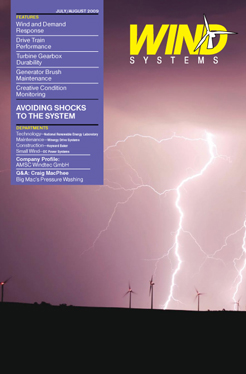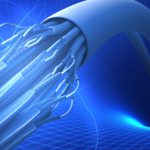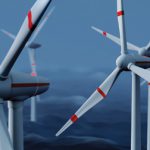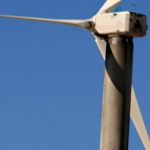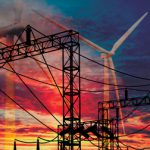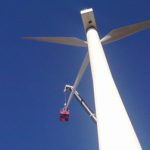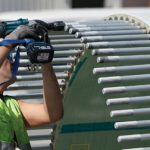In order to safely withstand the relentless forces of Mother Nature, and to provide a full service life with minimized maintenance, small wind power projects must be designed as complete systems, rigorously tested, and professionally installed. Consider the following: Turbine manufacturers provide rectification and control equipment and tower procurement engineering specifications for use with their systems. Towers are individually built to accommodate a turbine’s head weight, lateral thrust at maximum designed wind speed, mass offsets, deflection limits, and natural harmonic frequencies, to name only a few of the variables accounted for. Foundations are engineered to specific soil types and are different depending on tower type. Inverters and balance of system components are different for each system. With all these moving parts it is absolutely critical that small wind system designers and installers carefully consider the entire system as a whole prior to procurement and installation.
Turbine size and type should be optimized for the desired energy yield. It is unlikely that it will be possible to easily upsize or change out the turbine head once the tower is assembled, making proper sizing up front important. Turbine voltages can run from 12 volts to 400 volts, depending on whether the machine will be charging batteries, driving a water pump, heating homes, or connecting to the grid. Turbine voltage will also affect wire sizing, so this is also an important component of the planning process.
Towers are built for small wind systems as non-tilting monopoles: tilt-up monopoles operated with a gin pole, hydraulics, or screw jacks; self supporting lattice; guyed lattice; guyed flanged pipe monopoles; scissor towers resembling a trebuchet, and many others. Each tower should be designed to work with the turbine selected, and it should be provided with stamped engineering documents for the tower and foundation design valid in the state the system is being installed in. Tower selection is based on the site, which always dictates the height of the tower based on surface roughness, turbulence, proximity to obstacles, and often zoning laws and regulations. Each design has its advantages, ranging from affordability to ease of install, but long-term O&M should rank high on the list of considerations to avoid expensive crane visits each year for routine turbine maintenance. For this reason climbing facilities—including tie-off locations, climb safety devices, and work platforms—are a must on taller towers, which may also be available with hinged tower feet to allow for easier dropping of the machine for repairs beyond the scope of a tower climber. Where shorter towers can successfully be used, tilt-up monopoles up to 60 feet are available with some being hydraulically actuated, making the job of raising and lowering the system easier, more efficient, and safer than with traditional gin pole systems. Foundation designs vary with each tower and can be concrete, driven pile, screw pile, or even mobile designs, in some cases. In each case the foundation must be matched to the tower height and design, and the loading characteristics of the turbine used.
Balance of system components are different with each project. For battery charging systems they can be as simple as a charge controller and dump load resistor, or as complex as a mid voltage turbine with a voltage limiter and third party charge controller to accommodate longer wire runs where needed. Straight grid tie systems usually involve the manufacturer’s controller/rectifier, a voltage limiter, and a third party UL 1741 listed inverter. Hybrid systems allow for interaction between the turbine, a solar system, backup generator, battery bank, and the grid. All systems require strict adherence to NEC standards for disconnects, markings, grounding, and fusing, as well as utility interconnection standards in the case of grid tied systems.
Each piece of the system affects the entire project. Careful consideration of the interrelated nature of the individual components, their suitability for the application, and assurance of their compatibility with each other are crucial to success. Building a small wind business requires efficiency and thorough preparation. Unexpected issues arise with each job, but through careful planning and cooperation with your supplier, they can be minimized. Adopt a whole-systems approach and your small wind projects will flow more smoothly, resulting in quicker and more-profitable installs with reduced operation and maintenance costs.



















